(Editor’s note: This story has been updated with additional information from the Insurance Institute for Highway Safety.)
During a live-streamed event marking the first deliveries of the Tesla Cybertruck on Nov. 30, CEO Elon Musk played off a video showing the electric truck crashing into a barrier at 35 mph. “If you’re ever in an argument with another car you will win,” Musk said, triggering cheers from the audience. But safety experts aren’t quite ready to celebrate. Despite — or perhaps because of — Cybertruck’s stiff stainless steel body panels, questions are being raised about what it could do to pedestrians, bicyclists and other vehicles — and whether it can actually protect its own passengers.
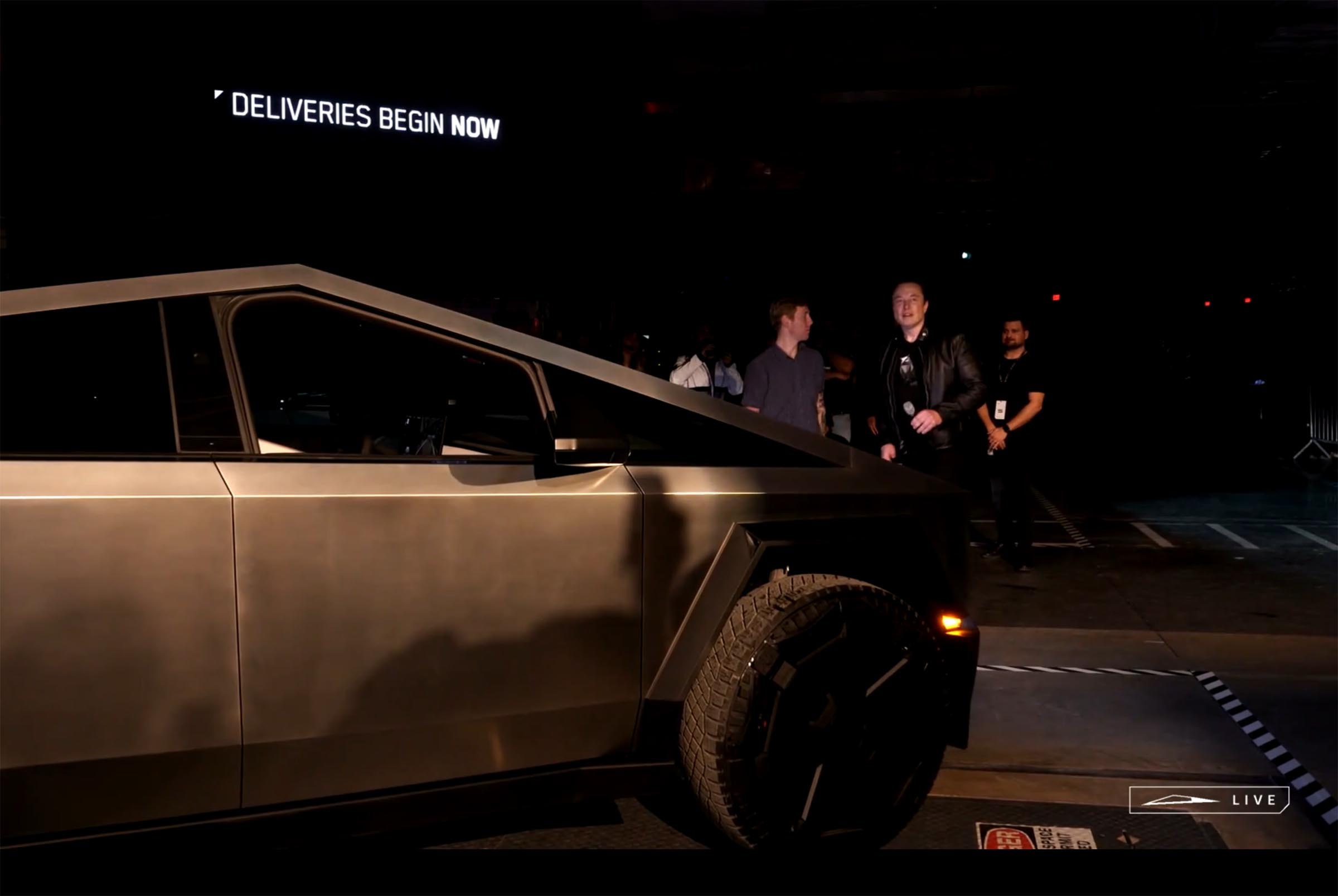
The first pickups were delivered to customers who came to the company’s Gigafactory near Austin, Texas.
The Tesla Cybertruck is the first vehicle in four decades to opt for stainless, rather than conventional steel for its exoskeleton. And it appears the alloy used is even stiffer than what was used for the old Delorean DMC-12.
CEO Elon Musk gave an indication of just how stiff the unique stainless steel alloy is when he explained that the pickup’s panels were all slab-sided because they simply couldn’t be produced like normal car bodies.
“You can’t actually stamp these panels,” he told an audience on hand for Cybertruck’s first deliveries on Nov. 30. “The panels would break the stamping machine.”
Bulletproof
Musk tried to demonstrate what that meant with several videos. The first showed what happened when the Cybertruck was sprayed with a round of gunfire. While there were dents in the body, the bullets didn’t penetrate.
Musk then showed a video of a Cybertruck slamming into a frontal barrier at 35 mph, a standard test used in vehicle development and, subsequently, to ascertain crash ratings.
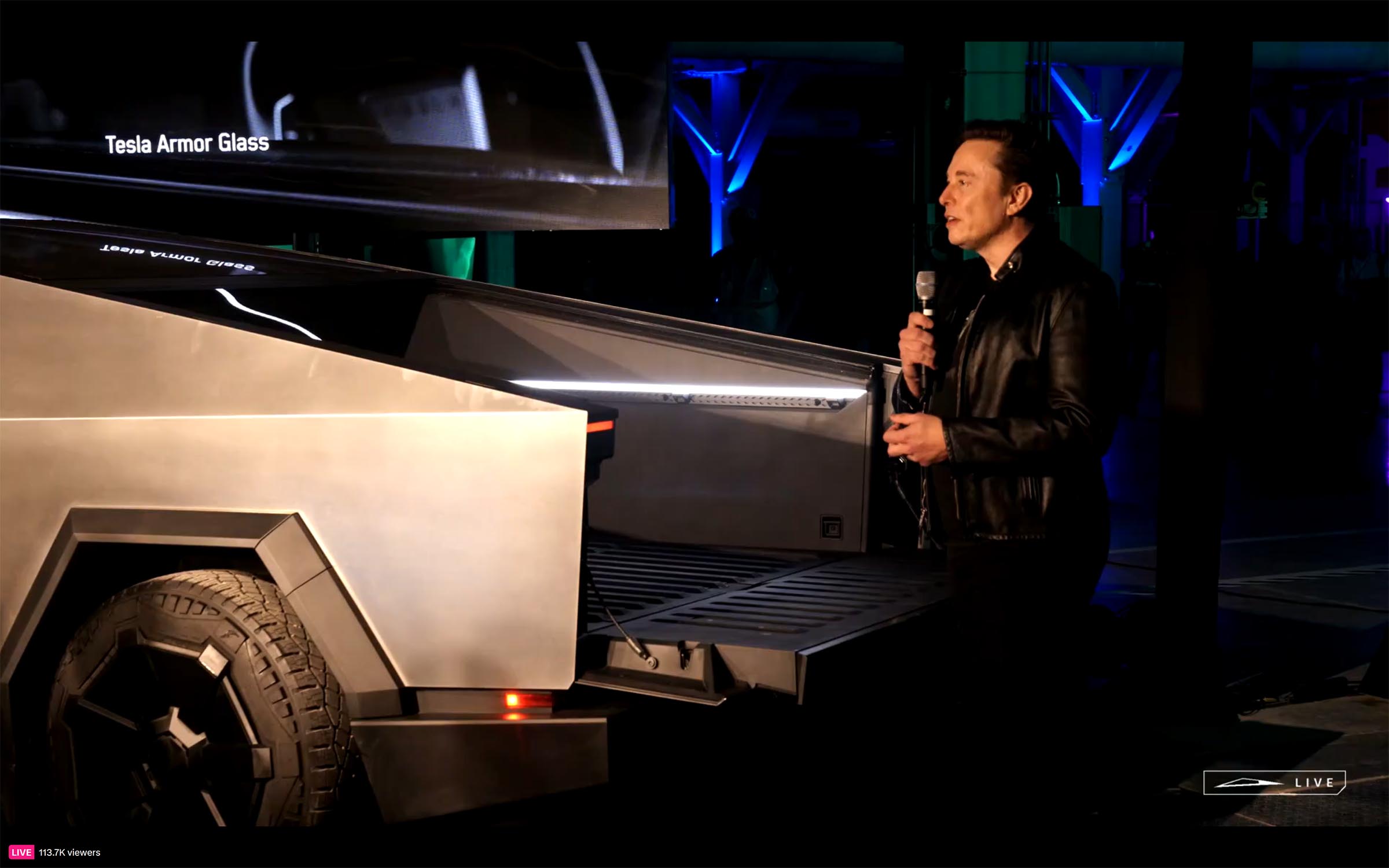
“If you’re ever in an argument with another car you will win,” Musk proclaimed during the presentation.
“If you’re ever in an argument with another car you will win,” Musk proclaimed, adding a few moments later, “The apocalypse could come along at any moment. And at Tesla we have the finest apocalyptic technology.”
Not everyone is celebrating
While there were cheers from the audience at the Cybertruck events, the videos are is generating significant interest — and concern — among safety experts.
So far, Tesla hasn’t revealed the precise data generated by the test, nor has it been validated by safety experts. It’s unclear when the National Highway Traffic Safety Administration, as well as the Insurance Institute for Highway Safety will weigh in, but the experts are raising concerns.
Cause for concern
The crash test video highlights, rather than resolves, several serious safety questions:
- Modern cars are designed to crumple, especially in a frontal crash, to absorb energy, rather than pass it into the cabin. Can those stiff body panels and short nose do that?
- What happens when a Cybertruck hits a pedestrian or bicyclist, especially with that sharp nose?
- What happens to another vehicle struck by Cybertruck?
And what happened with the rear wheel which clearly swings forward in the crash test? Did the suspension or the chassis fail?
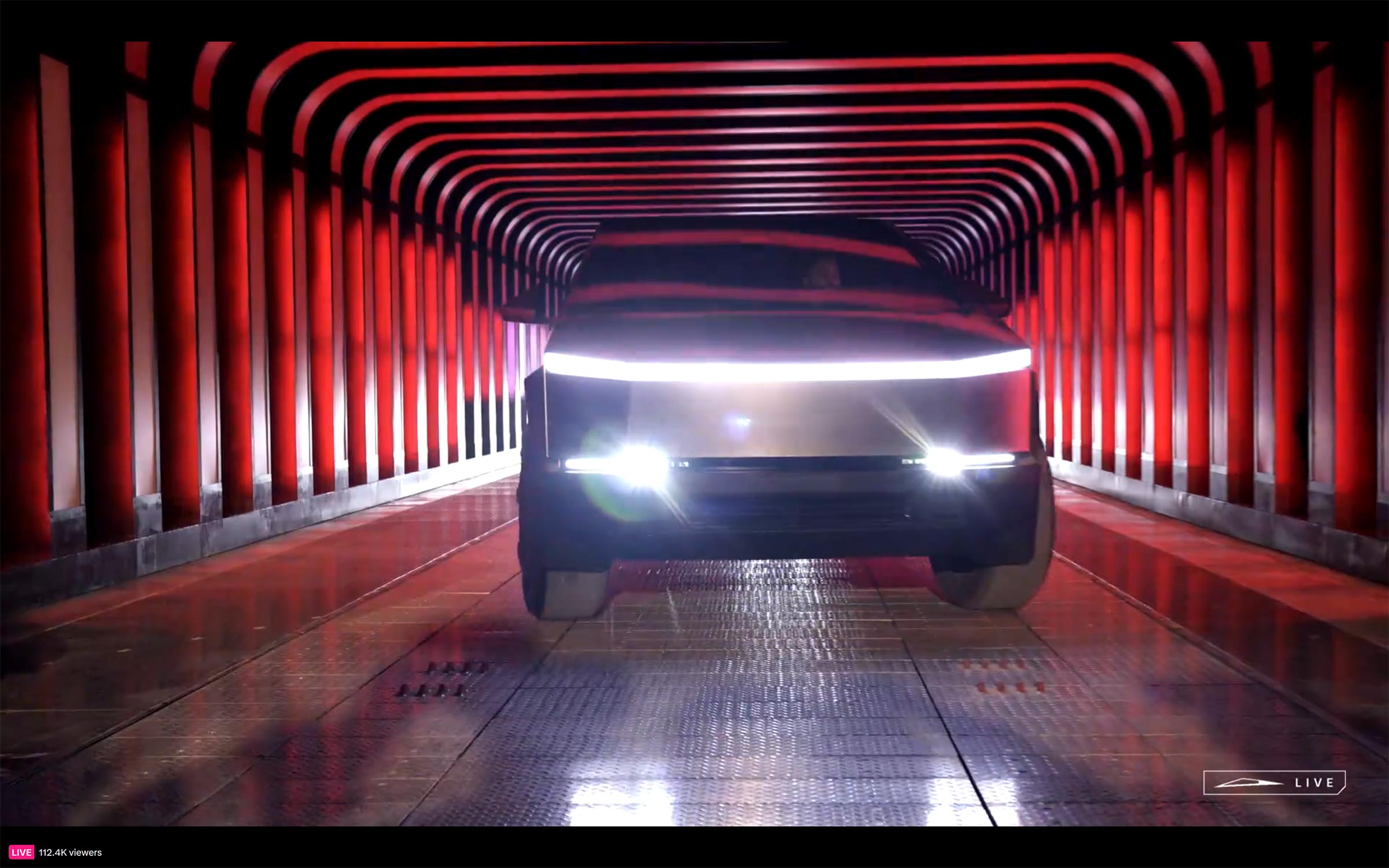
Musk did what some said would never happen: delivered a Cybertruck, but now it may have safety issues due to its design.
Designed to fail
In an examination of the Cybertruck’s possible safety issues, Reuters noted the cold-rolled steel panels on Cybertruck were designed to experience a controlled failure to absorb crash forces.
“The front and rear structures have energy-absorbing ribs that help dissipate energy, and during a side impact the skin of the door carried a majority of the crash load,” Reuters was told by Tesla.
The experts weigh in
Not everyone is convinced. One of the questions is whether the truck does have adequate crumple zones. Or, perhaps, Tesla might have come up with “shock-absorbent mechanism that will limit the fact that you have a limited crumple zone,” said Samer Hamdar, an auto safety expert at George Washington University.
The crumple zone concerns were amplified by the fact that, other than in a small area immediately at the front of the Cybertruck, there was little damage anywhere else. With a body that is too rigid it can be difficult to get crash forces to bypass the passenger compartment.
Meanwhile, the heavy mass and “bulletproof” body panels raise concerns about what happens when another vehicle is struck by a Cybertruck, former acting NHTSA chief David Friedman told Reuters. “If you’re in a crash with another vehicle that has a crumple zone and your car is more stiff, then their cars are going to crush and yours is resistant,” he said.
Wait-and-see
While some have expressed concerns, Russ Rader, senior vice president, Communications for the Insurance Institute for Highway Safety, offered a more tempered view.
He told Headlight.News that the group has not had a chance to test the Cybetruck yet, thus “it’s hard to reach any conclusions.” He also cautioned that at this point, everything else is based on speculation. “Our experience working with Tesla is that they aim for the highest IIHS safety ratings. We have no reason to expect something different from the Cybertruck.”
Rader added, “Any vehicle-to-pedestrian collision can cause serious injury or death, the risk increase with vehicle speed. There is a correlation between a vehicle’s front end size and shape and the risk to pedestrians. We haven’t assessed the front end of the Cybetruck to know how it compares to other pickups or SUVs.”
“Red flags”
Reuters also noted the concerns of Julia Griswold, director of the University of California, Berkeley’s Safe Transportation Research Center. She said she was “alarmed” by the crash test videos Tesla posted. She said the heavy weight of the trucks and their high acceleration “raise red flags for non-occupants.”
In general, SUVs, CUVs and pickups are far more likely to cause serious harm to pedestrians and cyclists when they’re struck — a key factor in the rise of deaths and injuries in recent years.
Using stainless steel panels could make it tough for Cybertruck to pass pedestrian impact testing in Europe. EU regulations have resulted in significant design changes, among other things the use of hood designs that can deform if a person lands on them, absorbing impact forces. Some automakers, however, have come up with other solutions, such as pyrotechnic hoods that lift slightly when a crash is detected, providing room to soften the blow.
Whether Tesla can find a solution is unclear and may be one reason why it has said that it currently doesn’t plan to sell the electric pickup in Europe.

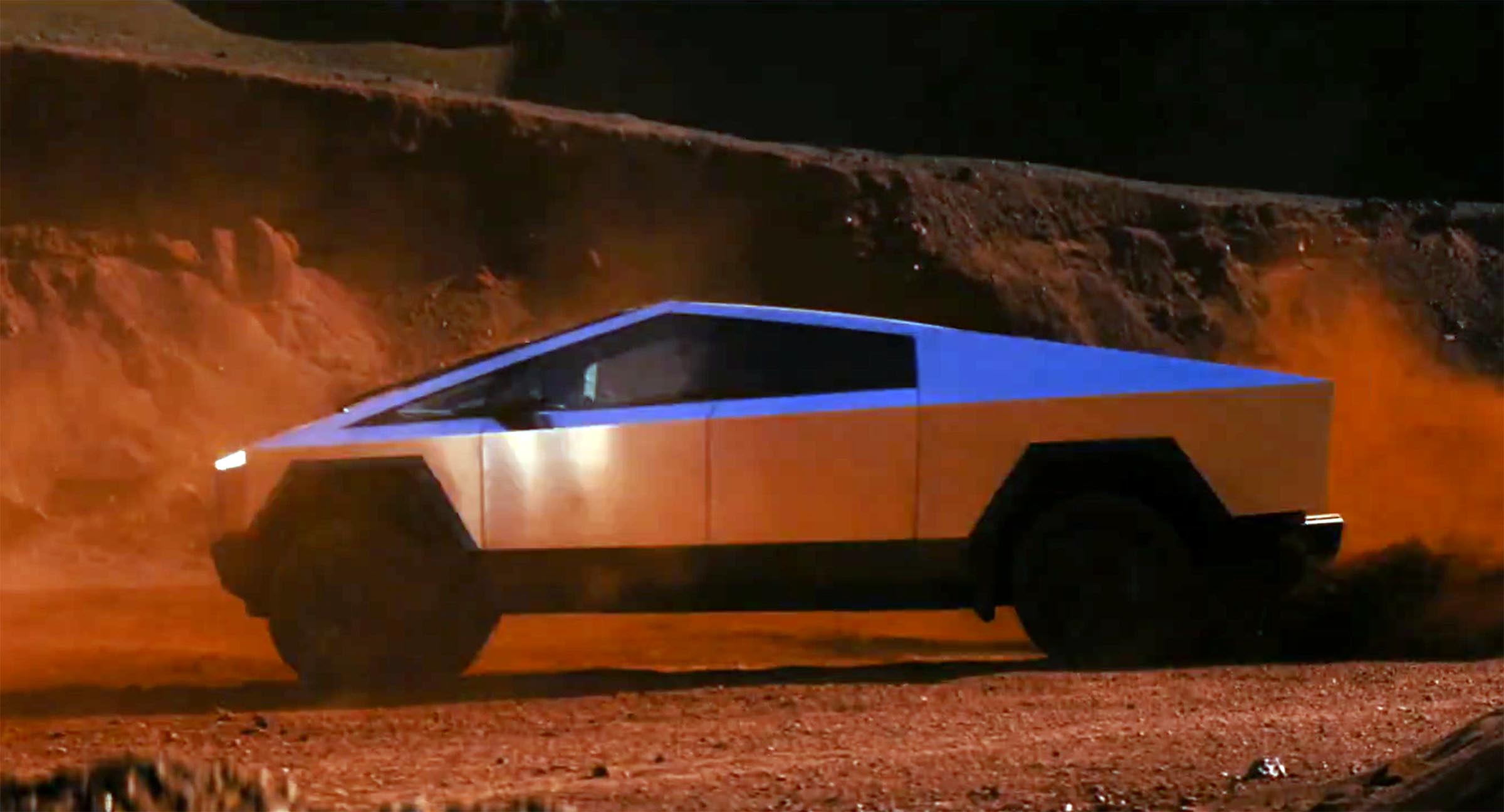
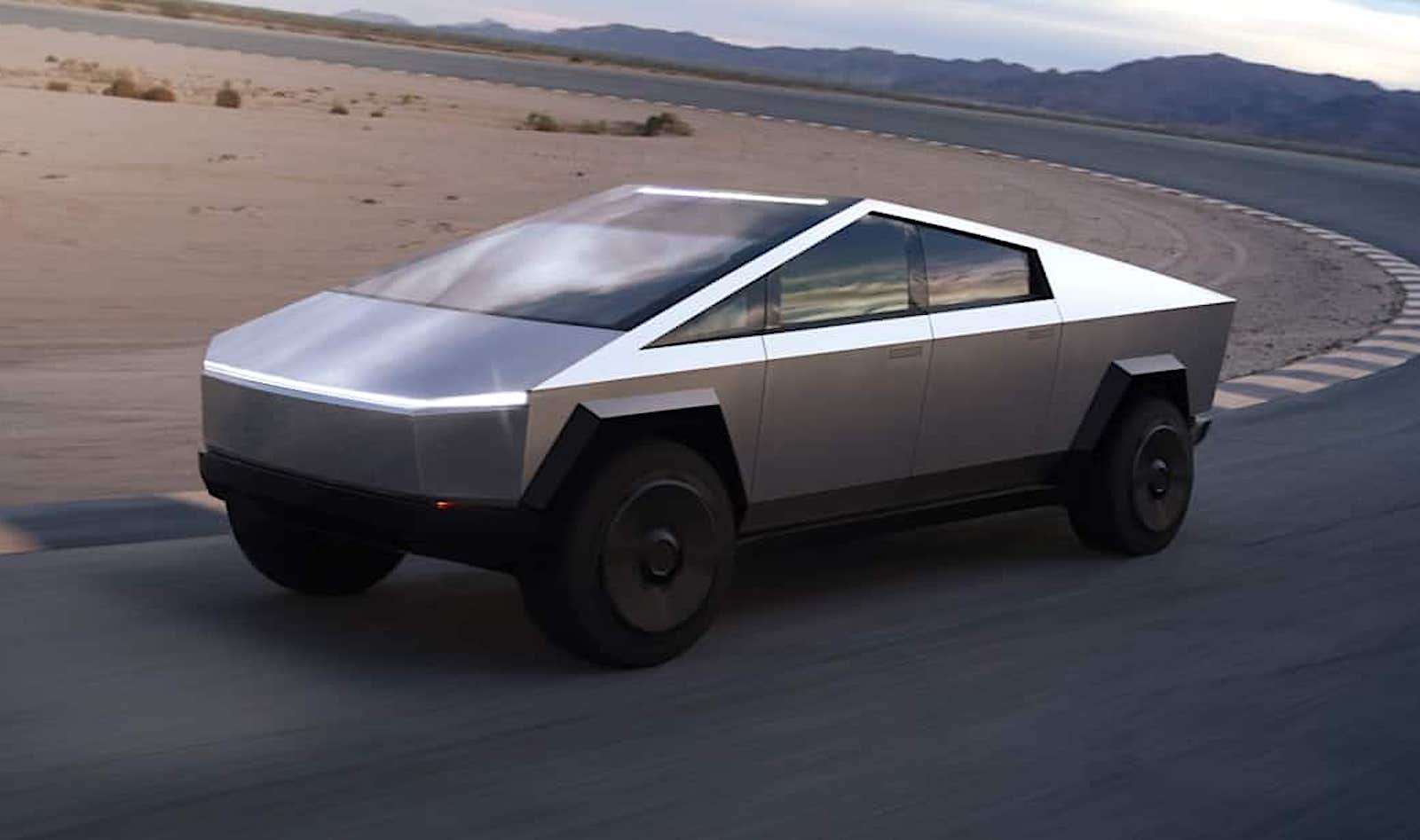
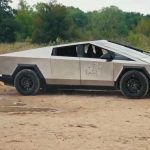
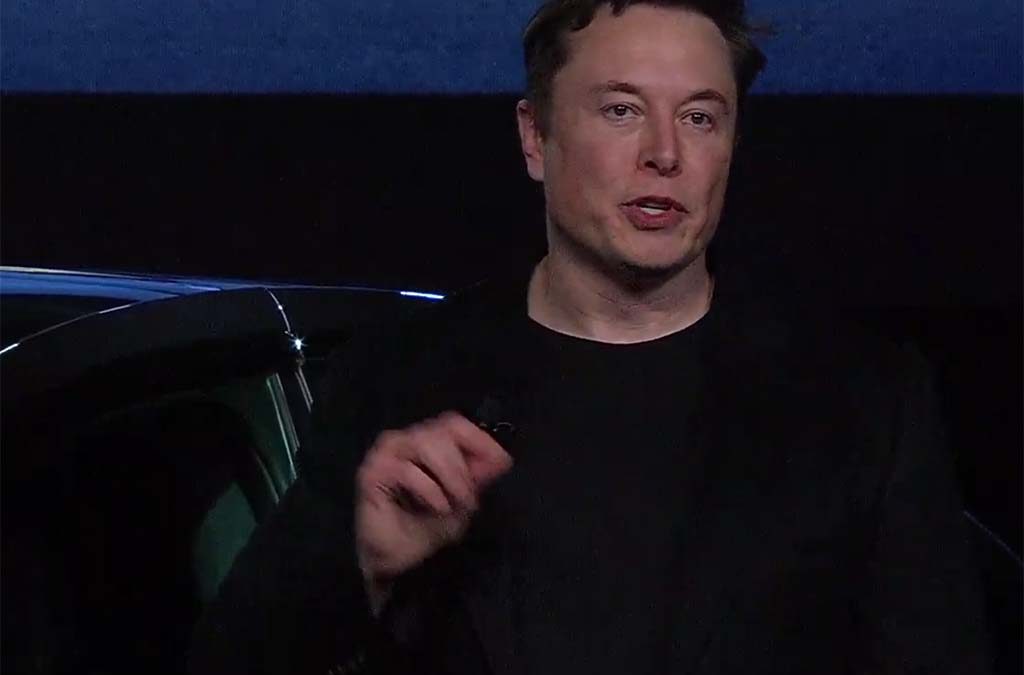
0 Comments